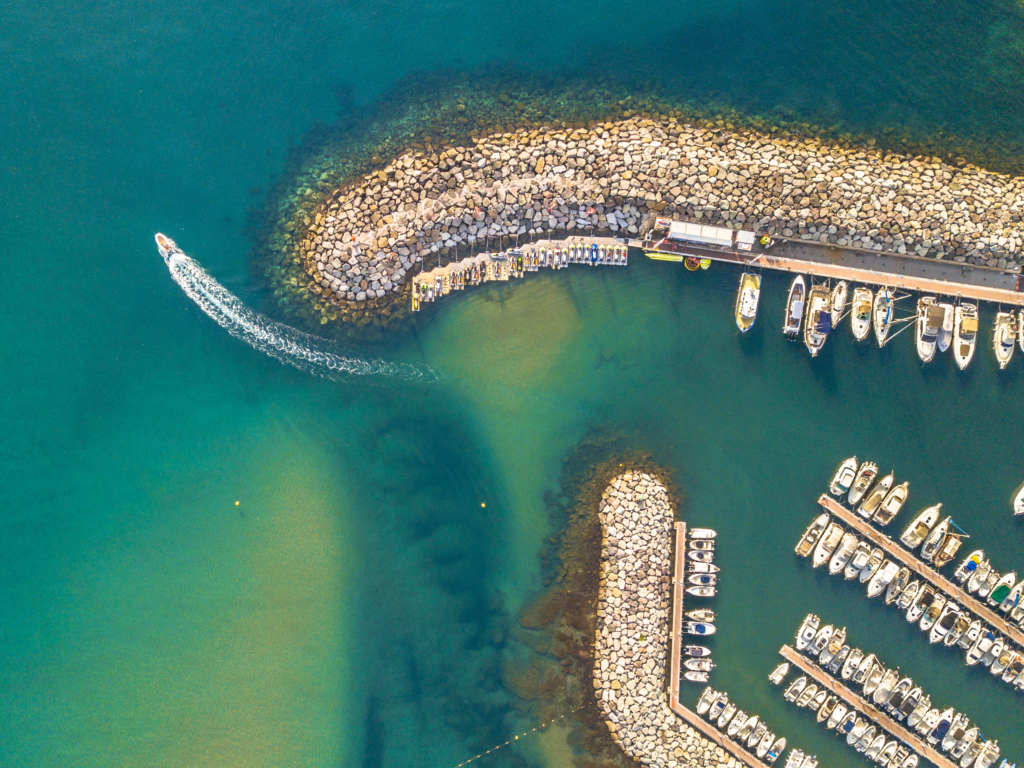
Chris Baker, our Head of Underwriting – Industry Lines, shares some risk management advice in the latest issue of Waterline magazine.
Nautilus Marine Insurance and the Marina Industries Association (MIA) take a very similar approach when it comes to risk management for marinas and boatyards. This risk management approach is based around industry education and awareness, professional preparedness, and accreditation. So, we thought it would be timely to share some common marina and boatyard risk exposures and claims scenarios. Plus, offer some advice for the owners and operators of marinas and boatyards about how these exposures can be managed.
Common risk exposures and claims
Damage to boats in your care: Operators and owners have a duty of care, and a legal liability, to ensure that all customers and other third-party property is looked after while at their premises.
Fuelling activities: Pollution to waterways and other property damage can result from fuelling activities. Risk management practices in the MIA’s Clean Marina Program can help owners and operators manage this risk.
Water damage to vessels: Incorrect fitting or failure to replace of bungs in vessels before launching can lead to water damage to vessels. Reminder notices to boat owners are very useful.
Incorrect boat storage on stands: Poorly maintained stands, or stands with inadequate weight capacity, present a significant risk. A toppling boat can result in damage and potential injuries. For example, we currently have an ongoing claim for a serious injury to a contractor who was crushed by a vessel that toppled from a poorly maintained hardstand. Bad weather conditions also need to considered as a factor for hard stand facilities.
Hot works: Errors made during hot works performed on the behalf of management by either an employee or contractor could lead to a fire. This could result in fire damage to boats or surrounding property.
Spray painting: Overspray from workshops could cause damage to surrounding property.
Contractor injuries or damage caused by contractors: Injury claims can be very costly and take many years to be settled.
Customer accidents: Slip and fall claims from customers are common. Especially when getting on and off vessels.
After hours risk management: Procedures must be in place for out of hours risk management, especially in terms of weather events such as storms or high winds. Operators should consider who secures and checks all boats when these occur outside of hours when there are usually no staff on site.
Weather damage to facilities: Storm damage to floating assets such as wharves, piles and jetties are common risks.
Fire risks: We have seen claims from fires that start on a customer’s vessel and spread to the marina and other vessels at the marina. The marina operator can be held liable for damage to other customers vessels at the marina.
Risk management tips to mitigate your exposure
- Contractor controls such as permits should always be in place. Check that all your contractors hold relevant coverage. Most contractor’s liability policies will contain a Principals Indemnity provision which covers you for the activities of the contractor. If not, ask to be noted as an Interested party on their policy. As a general rule, no insurance = no site access.
- Operators should ensure all contractors are adequately supervised and follow a safe system of work while on your premises.
- Have after hours security procedures in place. This includes factors such as fencing, after-hours access, emergency response procedures including staff on call 24/7.
- Keep up to date with OH&S procedures and safety standards for all equipment. Maintenance procedures need to be documented and regularly updated. These procedures can prove invaluable in the defence of a claim. Formal maintenance agreements should also be in place with all service providers.
- Conduct regular recorded checks for potential trip hazards. Warning signs should comply with industry standards. These can prove invaluable in the defence of any tip and fall claim.
- Ensure all hot work conducted on site is in accordance with all relevant legal and industry standards.
- Operators should ensure that they have a legally vetted contract in place for all visitors to their premises outlining each parties’ responsibilities and insurance obligations.
- All spray painting should be conducted in a purpose-built booth wherever possible. If not possible, always avoid spray painting in windy weather.
- Record the insurance details of all customers using the marina, including their liability cover. Make sure this insurance is placed with a local insurer who can be easily contacted to respond to claims. This will assist recovery action by your insurer for any damage caused by boat owner negligence, lessening the impact on your own policy.
As you can see, most of these exposures and claim scenarios can be managed by marina operators through the implementation of documented risk management procedures. Although accidents happen insurance should always be considered the last resort in the treatment of risk.
Read Chris Baker’s full column in the latest issue of the Marina Industries Association’s Waterline magazine here. To find out more information about the MIA visit www.marinas.net.au
